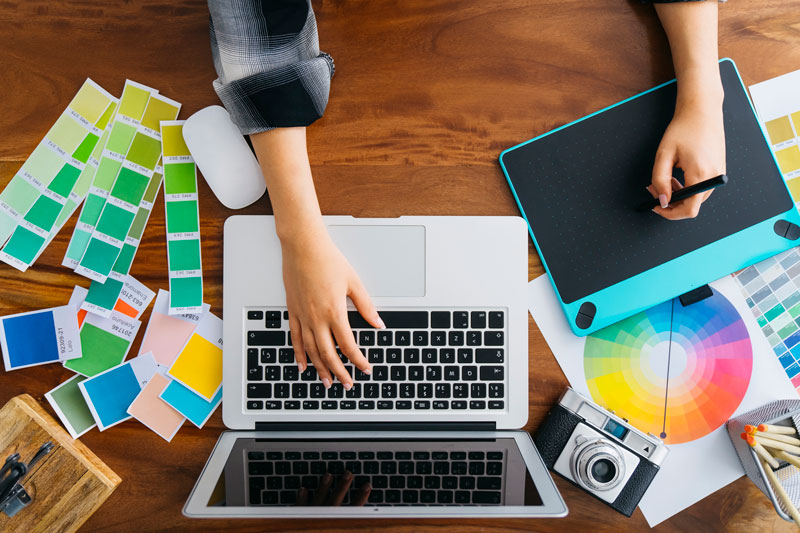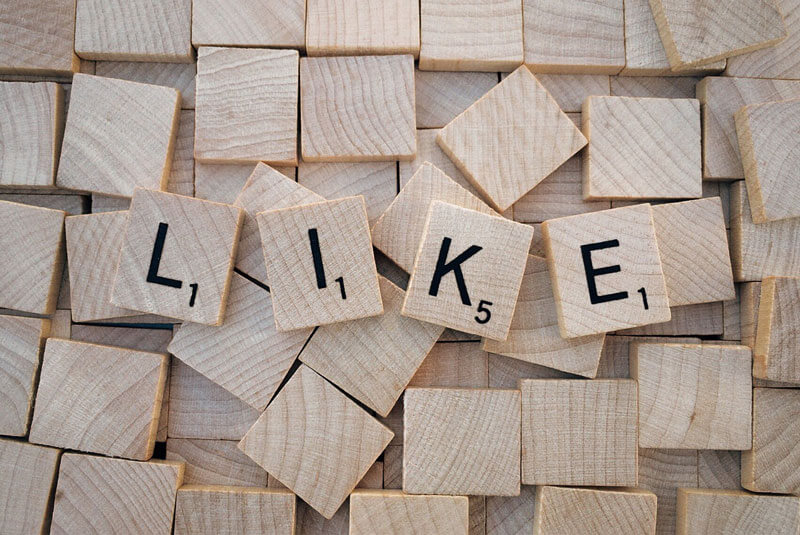It's one of the first things newly minted lawyers need when getting ready to hang their shingle. A logo. Suddenly, the business feels real; it makes it all official. As the company grows, there may come a time when that logo needs to be revisited. A new partner may have joined, or perhaps it just seems like the right time for a refresh. But how important is a logo for a law firm, really? Is it worth the investment? Does it actually make a difference in terms of business? And, if it does, what makes for an effective one?
Take home
As the company grows, there may come a time when that logo needs to be revisite.
A well-designed logo goes a long way in instilling confidence, not only in potential clients, but within the law firm itself.
Full article
The Importance of Law Firm Logos
In the simplest terms, a logo visually represents a company, product or service. It uses typography, color and (sometimes) iconography to establish a—hopefully memorable—visual shorthand. When done well, the logo will be consistent with your company's culture and values, will help make your company stand out among its competitors, and will help tie together your marketing efforts cohesively. When done adequately, it won't hurt anything, but it won't particularly help either, and it may be quickly forgotten. When done poorly, a logo can actually hurt a company, undermining the perception of its competence. Not a good prospect for any business.
Good design—including logos—has been shown time and again to be good for business. First impressions count for a lot, and well-executed design helps instill a sense of trust. According to a Stanford University study, 75% of users admit to making judgments about a company's credibility based purely on design presentation, such as the company's logo and website design. As goods and services achieve more parity—those that can't compete in today's business world are apt to fail based on online word of mouth alone—design can become the differentiator. Guideline Additional Comments Supporting Research from our lab (1). Make it easy to verify the accuracy of the information on your site. You can build web site credibility by providing third-party support (citations, references, source material) for the information you present, especially if you link to this evidence.
Even if people don't follow these links, you've shown confidence in your material (2). Show that there's a real organization behind your site. Showing that your web site is for a legitimate organization will boost the site's credibility. The easiest way to do this is by listing a physical address.
Other features can also help, such as posting a photo of your offices or listing a membership with the chamber of commerce (3). Highlight the expertise in your organization and in the content and services you provide. Do you have experts on your team? Are your contributors or service providers authorities? Be sure to give their credentials. Are you affiliated with a respected organization? Make that clear. Conversely, don't link to outside sites that are not credible. Your site becomes less credible by association (4). Show that honest and trustworthy people stand behind your site.
The first part of this guideline is to show there are real people behind the site and in the organization. Next, find a way to convey their trustworthiness through images or text. For example, some sites post employee bios that tell about family or hobbies (5). Make it easy to contact you. A simple way to boost your site's credibility is by making your contact information clear: phone number, physical address, and email address (6).
Design your site so it looks professional (or is appropriate for your purpose). We find that people quickly evaluate a site by visual design alone. When designing your site, pay attention to layout, typography, images, consistency issues, and more. Of course, not all sites gain credibility by looking like IBM.com. The visual design should match the site's purpose (7). Make your site easy to use -- and useful. We're squeezing two guidelines into one here. Our research shows that sites win credibility points by being both easy to use and useful. Some site operators forget about users when they cater to their own company's ego or try to show the dazzling things they can do with web technology (8).
Update your site's content often (at least show it's been reviewed recently). People assign more credibility to sites that show they have been recently updated or reviewed (9). Use restraint with any promotional content (e.g., ads, offers). If possible, avoid having ads on your site. If you must have ads, clearly distinguish the sponsored content from your own. Avoid pop-up ads, unless you don't mind annoying users and losing credibility. As for writing style, try to be clear, direct, and sincere (10). Avoid errors of all types, no matter how small they seem. Typographical errors and broken links hurt a site's credibility more than most people imagine.
It's also important to keep your site up and running. For more information, contact bjfogg@stanford.edu Suggested Citation Fogg, B.J. (May 2002). "Stanford Guidelines for Web Credibility." A Research Summary from the Stanford Persuasive Technology Lab. Stanford University. www.webcredibility.org/guidelines
Of course, the company behind the logo must be respected and trusted, or become that way, in order for the logo to gain any real value over time. But in and of itself, the way your logo looks says a lot about you and your company. First impressions, after all, are important—we make assumptions every day based on purely visual cues. In our swipe right, swipe left culture, we're pretty good at judging books by their covers. And we make these judgments very quickly. Simplicity is key: If the mark is too complicated, it'll be hard to apply across the range of applications where logos are typically used But what makes a logo a good logo? There are myriad attributes that contribute to a mark's success.
Simplicity is key: If the mark is too complicated, it'll be hard to apply across the range of applications where logos are typically used. A nice example is the logo system for Fourteen, a British law firm, which uses typography to suggest the numeral (https://fourteen.co.uk). Simplicity is also a hallmark of a good user experience, which is ultimately what you want your clients to have. A good mark needs to be robust and versatile enough to work effectively at different sizes. A sense of timelessness is also helpful, both in the sense of not looking dated and not looking too trendy, which will soon look dated. Then there is a delicate balance between two additional attributes: being appropriate while also being memorable.
The logo should look like it represents your firm and not cause category confusion; at the same time, if it plays by the rules in an expected way, it may be quickly forgotten or mistaken for those of your competitors. This is a missed opportunity—by definition, a logo should help increase recognition. Big corporations routinely make updates to their branding that maintain recognizability while also making the brand feel a bit more contemporary and relevant. For businesses that have been around for a while, it's worth considering whether your logo is dated and could use a refresh, or even an entirely new design.
The question of equity is an important one—if your clients associate you strongly with a particular mark, and business is good, then a dated logo might benefit from a simple refresh, as opposed to a wholesale redesign. Big corporations routinely make updates to their branding that maintain recognizability while also making the brand feel a bit more contemporary and relevant. On the other hand, if your business has little association with its current logo and/or business is poor, it may be a good time to consider a whole new approach to your logo.
There is a delicate balance between two additional attributes: being appropriate while also being memorable A cursory Google image search of law firm logos reveals a consistent and expected set of elements: iconographic representations of the scales of justice, or sometimes Lady Justice, coupled with rather conservative typography, usually in navy blue with gray or gold. Of course, there's a good reason for these color choices. "Blue and gray hues are your loyalty and dependability colors," suggests The Business Journals. "Those colors also convey a good work ethic. Wear blues and grays when you will be meeting with your boss or even your boss' boss." This explains why it's common to see politicians wearing blue. It's also regarded as the most universally liked color—admired equally by both sexes—so it's a particularly safe bet for logo use in the legal space and beyond. But a safe bet is not always the best bet.
Those colors also convey a good work ethic. Wear blues and grays when you will be meeting with your boss or even your boss' boss Color improves brand recognition by up to 80%. At the same time, roughly one-third of the world's brands include the color blue in their logos. Using logo elements that blend in with those of your competitors is what we in the branding business refer to as the dreaded "Sea of Sameness," something to be avoided if you want to differentiate yourself and truly stand out. Playing it safe and going the expected route may render you invisible—not a good thing for a law firm, or any business for that matter. Playing it safe and going the expected route may render you invisible—not a good thing for a law firm, or any business for that matter. This is not to imply that a law firm should break out the pastels, or convey that it is something that it's not. It's a delicate balance, one a good designer is able to assess and work with.
An effective logo must be appropriate while also being distinctive and memorable. But that pastel logo might not be as crazy as it seems—welcome to the post-Millennial world, where the color pink has been one of the most popular colors in recent years in marketing intended for both women and men Welcome to the post-Millennial world, where the color pink has been one of the most popular colors in recent years in marketing intended for both women and men This suggests that aesthetic considerations are changing drastically when compared to previous generations. As Millennials and their successors, Gen Zers, grow older, they'll be making decisions on products and services based on a very different set of sensibilities than those of their parents or grandparents. That will be true in the world of law and everywhere else. A relevant law firm identity will still need to look smart and dependable, but it'll certainly help if it looks contemporary as well.
Recent years have seen a boom in categories that once paid very little attention to design. Casper took the mattress industry and turned it on its head with a colorful, illustration-led branding campaign that placed the once-humble mattress in a vibrant lifestyle space. The Quip toothbrush did the same thing. These are examples of 21st-century brands that look and feel very different from their 20th-century counterparts and that appeal to a much more design-savvy audience. That's a trend that's here to stay in the post-Millennial world, where consumers are looking to enhance their lifestyle with well-designed products and services that speak their language. A conservative blue-and-gray scale of justice logo is probably not going to win any enthusiasm as these younger audiences become older and start needing legal assistance.
A conservative blue-and-gray scale of justice logo is probably not going to win any enthusiasm as these younger audiences become older and start needing legal assistance. Other aspects of identity design are evolving as well. When we think about a company's branding, the logo is certainly important. But it's the whole visual system that surrounds and supports the logo that is arguably of most importance. So a nice logo that's surrounded by poor design— clichéd and/or dated photography, colors that look overly corporate, bad typography and layout—is not going to be enough to give the right impression. In today's crowded media landscape, it's never been more important that the whole graphic system works together in a compelling and memorable way across all applications, from business cards to Instagram feeds.
Of course, there are cost implications to designing a logo, with a great deal of variance. Nike famously spent only $35 in 1971 for its famous "Swoosh," designed by graphic design student Carolyn Davidson. (When it was finished, Nike co-founder Phil Knight famously said, "I don't love it, but I think it will grow on me.") Meanwhile, Pepsi spent $1 million for its new logo in 2008. Both examples are extreme, and the consumer products space has more logo touchpoints than a legal firm, but it's typically a good investment to employ a designer or firm with a demonstrated track record of creating successful identity systems. There are off-the-shelf options out there in abundance online, but these same marks can be purchased by others, and will do little to help you stand out from your competition.
Conclusion
This increasingly visual culture may seem daunting from the perspective of creating a logo for a new law firm, or updating an existing company's brand mark. But the investment in hiring a talented designer, branding firm or agency is money well spent. After all, a well-designed logo goes a long way in instilling confidence, not only in potential clients, but within the law firm itself.
- Alan Vinson. Why the color of your suit matters. The Business Journals.
- Jessica M Alleva Ph.D. Blue Is For Boys AND Girls. Psuchology Today.
- Jonauskaite, D., Dael, N., Chèvre, L., Althaus, B., Tremea, A., Charalambides, L., & Mohr, C. (2018). Pink for girls, red for boys, and blue for both genders: Colour preferences in children and adults. Sex Roles.
- Croft, A., Schmader, T., & Block, K. An underexamined inequality: Cultural and psychological barriers to men's engagement with communal roles. Personality and Social Psychology Review, 19, 343–370.
- Fiske, S. T. (2010) Interpersonal stratification: Status, power, and subordination. In Handbook of social psychology. Hoboken, NJ: John Wiley & Sons, Inc.
- Gabriel Shaoolian. Marketing, Web Design & Branding Statistics To Help You Prioritize Business Growth Initiatives. Forbes.
- Jr Thorpe. Why Are We So Obsessed With Millennial Pink? There's A Scientific Explanation For Everything. Bustle
Comments
Related links
Main menu
















